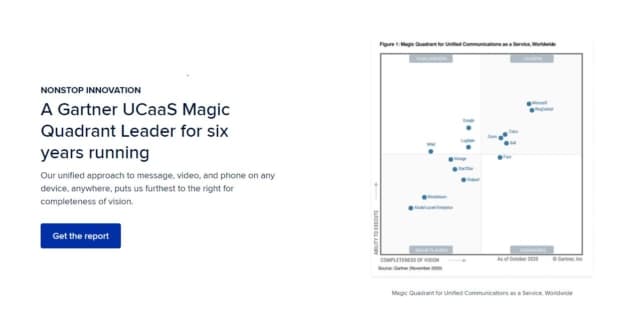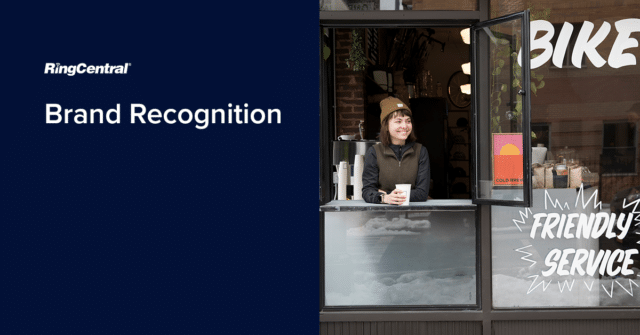More than 70% of brand managers think that building an audience is more important than converting sales. It makes sense when you think about it: a company’s audience forms their sales leads. Without them, who are you?
To acquire that audience, creating a strong brand and a household name are essential. Consumers need to know who you are and what your value is before they give you their trust and money.
That’s where building brand recognition and building brand awareness come into play. As does devising effective business marketing strategies to promote brand recognition and awareness.
Think about your brand: is it memorable? Do you develop marketing campaigns that increase your market share?
Whether you’re a small business or a large enterprise, if you’d like some information on brand recognition, read on for the lowdown.
What is brand recognition?
Branding is more than just the logo of a business, a brand name, or its slogan. Brands are assets; because of that, they’re usually trademarked.
A brand represents the heart and soul of a company. It depicts what the business stands for and the company’s values.
It’s about the tone of voice you use when communicating with customers, and what springs to mind when people hear your brand name. Also, the emotions people feel when they think about your brand, and why they buy from you over your competition.
By understanding what you want to portray, it’s easier to design a visual identity for your brand. For example, that identity could involve a logo, slogan, tagline, or jingle. It may involve a combination of these characteristics.
The term brand recognition is linked to branding and is a business concept used by marketing and advertising. It’s also known as aided recall.
Brand recognition means a consumer can identify your brand over another one by a visual or auditory cue. Members of the public or your target audience recognise you by these characteristics.
So, if your product or service becomes synonymous with a logo or slogan, you’ve achieved brand recognition.
How brand recognition works

Does an audio or visual cue trigger something in you, meaning you can identify a brand without seeing its name?
For example, if you see golden arches, it’s more than likely you think of McDonald’s, correct? And the words ‘Vorsprung durch Technik’ probably send your mind to Audi.
How about ‘It Gives You Wings’? Does Red Bull come to mind without you even realising it? Now think about Netflix and Intel: can you hear their audio soundbites?
These examples are all brand recognition in action.
Brand recognition helps keep a specific good or service in a person’s mind. A sound or visual cue of a brand separates it from their competition.
Companies strive for brand recognition. Marketers spend a lot of time and money trying to create a brand that people will recognise and remember. To do that, they come up with ideas.
They’ll make suggestions using logos, colours, and short phrases. The aim is for the brand to stand out and be memorable.
What company do you think of when you consider the word brand?
Some people may say Nike and ‘Just Do It.’. That’s an excellent example of brand recognition. The slogan has been around since 1987 and is still going strong today.
The difference between brand recognition and brand awareness
Brand recognition is part of brand awareness. So what’s brand awareness, then? These descriptors are often used interchangeably, but there are core differences.
Brand awareness is the knowledge that a specific brand exists.
Brand awareness is an umbrella term, with brand recognition and brand recall as components. And what’s brand recall, you may be wondering?
Brand recall is a consumer’s ability to correctly identify a brand from memory when they’re given a product category as a prompt. Other interchangeable terms are unaided recall, top-of-mind, and spontaneous recall.
For instance, if someone says burger, which brands come to mind? Companies like Shake Shack, Honest, Five Guys, and Burger King could all be possibilities. How about fizzy drinks? Pepsi and Coca-Cola would most likely be your first thoughts.

Here are some more examples:
- Supermarkets: Sainsbury’s, Waitrose, M&S, Tesco, Lidl
- Mobile phone technology: Apple, Samsung, Sony
- Trainers: Nike, Adidas, Reebok, Converse
Brand equity
Let’s throw another brand-related term into the mix: brand equity. That’s about building a connection between your company and your customers. It’s more than just being aware of what a company does or sells. It’s also more than being able to identify a company through a logo or tagline.
It’s the value a company generates from its brand name, as opposed to a generic equivalent. It’s about customers knowing in an instant that your product or service is the right one for them and that you offer them the best solution.
And how would they know that? Because you’ve shown them why you’re different from other businesses and demonstrated how you’re valuable to them. You’ve convinced them to buy from you.
Brand equity hones in on that heart and soul we mentioned earlier. It’s more than just an image or tone of voice.

Brand recognition strategies
So, you’ve done your research, established who you are, pinpointed your values, and decided on your visual and audio elements. To broaden your brand recognition, there are many marketing efforts to help make you more visible.
These promotional techniques include:
Website optimisation
A great-looking website is all very well, but if it isn’t optimised, you’re losing out big time. You need to make sure your site performs efficiently and ranks highly in terms of search engine optimisation (SEO).
Implementing brand recognition keywords into website content will help boost your SEO ranking. And, in time, you’ll move up the search engine results pages (SERPs).
It’s also important to consistently highlight your brand identity across your website. That includes product pages, blog posts, and landing pages. To do that, use colours, fonts, and images that are in line with and highlight your brand identity.
Taking RingCentral as an example: our blue and orange colour scheme is evident across the website. That includes the logo, chatbot, and feedback popup.

Use content
A solid content marketing strategy builds brand recognition and helps generate loyalty. By sharing your brand’s values across digital marketing mediums, you’re increasing contact with your audience. That means brand familiarity rises.
For example, consider sharing blog posts across social media or posting videos on YouTube. You may want to create a brand hashtag to use alongside your posts, and for followers to use, too. Conduct research into which Instagram hashtags lead followers to your page and the most popular tags for your industry.
Think about sending out weekly newsletters or using a referral program to create brand advocates. And always make sure your content adds value and is SEO optimised.
It can take between five and seven impressions for consumers to remember a brand. By keeping your name on people’s radar with engaging content, they’re more likely to remember you. And before you know it, they’ll become an existing customer rather than a potential one.
Approach social media influencers
Linked to our previous point is building brand authority via influencers. Contact professionals in your business arena to potentially work in partnership with.
But choose wisely: people who are in line with your brand and target audience.
Guest blog posts
Spread your brand’s message and reach new audiences by creating related content for other platforms or websites.
Guest posting attracts traffic back to your website and increases credibility and awareness. Guest blogging also builds relationships with industry peers.
PR campaigns
Let people know about your company and brand through press coverage in an editorial publication. That type of marketing strategy doesn’t have to cost a fortune and can humanise your brand. For example, the campaign could focus on your personal story.
Customer experience
The above brand recognition strategies get your brand out there, garnering attention. Next, it’s time to gain consumers’ trust, loyalty, and respect via brand awareness campaigns. These include tactics such as education and entertainment.

Surveys show that 96% of consumers say customer service is an important factor in choosing brand loyalty. So you should also aim for top-class customer service and a positive customer experience.
If a potential customer associates your brand with negative service, that’s brand awareness for the wrong reason.
To help achieve high-quality customer service, you may want to consider transitioning to a cloud-based support system. That way, in the post-COVID world, teams can work from anywhere and make the most of features such as live chat and messaging.
Brand recognition and awareness methods combined
As well as implementing individual strategies, there are combined methods you can use. These will help achieve both brand awareness and brand recognition at once. For example:
- Grow your social media following. Modern businesses can’t ignore platforms such as Twitter and Instagram. People like to connect with brands through social media.
- Aim for uniqueness. If you’re offering the same as other companies you’re not going to stand out from the crowd.
- Strive for word of mouth advertising. A powerful organic tool, because people trust the opinions of friends and people they know.
Benefits of brand recognition
By successfully promoting your brand, you’ll reap a host of benefits. For a start, customers recognise your business. Because of that familiarity, they’re more likely to buy your product or service.
And through brand recognition, you achieve a competitive edge. That edge differentiates you from other companies. Also, when consumers recognise your brand, that makes it easier to introduce new products. With a brand following comes anticipation and excitement for new product lines.
People are attracted to brands they feel they share values with. By building brand recognition and emotional connections with customers you enhance your credibility.
Ultimately, successful brand recognition leads to new customers, more sales, and customer loyalty.
Challenges
We’ve laid out some marketing strategies, but what are some of the difficulties when striving for brand recognition?

Wrong target audience
If you don’t do enough market research you’re in danger of targeting the wrong audience with your strategy. There’s little point in focusing your content and PR efforts on demographics that aren’t interested in your products.
You want the right people to take notice, so don’t waste money targeting the wrong editorial publications for your brand. For instance, if your target market is the over 70s, don’t get in touch with a millennial-focused magazine.
To be sure you don’t fall into that trap, identify your buyer persona before you put together your brand recognition strategy. That will help you customise content and campaigns with the right tone of voice and message.
Social media challenges
Similarly, be sure to build the right social media presence. Once you’ve identified your ideal consumer, research which social platforms they tend to use the most regularly. Is there a particular time of day you should post?
Inconsistency
Don’t chop and change your brand focus and messaging. If you do, it can lead to customer confusion and a lack of trust and loyalty.
Be clear and consistent from the outset with aspects like colour scheme, tone of voice, and value. Studies show that a consistent brand across all platforms can increase revenue by up to 23%. So you want to deliver a consistent brand experience whatever the medium of communication.
Education
You may need to educate consumers. Particularly if your product is a new and innovative one. Why do they need your product? What will it do for them?
Think about your unique selling point (USP) and build a story around that.
Brand recognition lowdown
Brand recognition occurs when a consumer can identify your brand by a visual or audio cue. To promote and enhance that recognition, well thought out marketing campaigns are vital. These involve targeting the right audience through the best channels.
But other factors such as customer service also come into play. A study by Walker predicted that in 2020, customer experience would become the key brand differentiator, overtaking product and pricing. So really, it’s the whole package that builds brand recognition, awareness, and loyalty.
Originally published May 26, 2021

